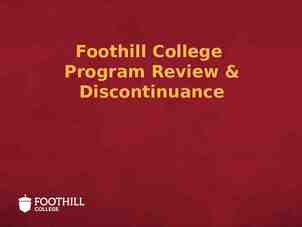This exercise program was developed and made available by the
45 Slides676.45 KB
This exercise program was developed and made available by the Missouri Hospital Association through funds from the ASPR Hospital Preparedness Program CFDA 93.889, through a subcontract from the Missouri Department of Health and Senior Services for the purposes of individual hospital preparedness and exercise. Sources used in the development of these materials are noted in the Notes Section except where general knowledge. This exercise is intended to be modified to be pertinent to the exercising hospital’s characteristics as identified in preparedness and hazard vulnerability efforts. Wording in red is specifically intended to be modified by exercise designers.
Hospital Violent Intruder Tabletop Exercise Organization DATE
Welcome Hospital Leadership: President, CEO, Director or equivalent Emergency Management Leadership: VP, Director
Presenters Suggested presenters: Emergency management leader Security leader Local law enforcement
Exercise Objectives Orientation: Discuss background on violence in hospitals and the community Review (hospital) Violent Intruder Response Plans Review Law Enforcement Response Plans Tabletop Exercise: Scenario Presentation and Group Discussion
Joint Commission Sentinel Event Alert June 3, 2010 Health Care institutions are facing steadily increasing rates of crime, including violent crimes such as assault, rape, and homicide. Criminal activity spilling over from the streets into hospitals. Assault, rape, and homicide are consistently among the top 10 types of sentinel events reported to Joint Commission. Safety and Security of patients, visitors, and staff requires increasingly vigilant attention.
Workplace Violence Statistics 2 million Americans face workplace violence annually in the US Homicide is one of leading causes of job related deaths in US 8666 occupational homicides (1997 to 2010) – 79% by firearms Rate of assaults on healthcare workers 8 of 10,000 compared to 2 of 10,000 for private sector industries Reference: Kelen, Catlett, Kubit, Hsieh (2012). Hospital-based shootings in the United States: 2000 to 2011. Annals of Emergency Medicine.
Hospital-Based Shooting Study Findings Out of 154 hospital shootings: 59% inside hospital vs 41% outside 91% of shooters were male Location: 29% ED, 23% parking lot, 19% patient room Motive: 27% grudge, 21% suicide, 14% euthanize relative, 11% prisoner escape Victim: 45% perpetrator, 20% hospital employee, 3% physician, 5% nurse 23% of ED shootings, weapon taken from security guard
Background – Critical Incident Facts (Your city) Statistics
Background – Critical Incident Facts (Your Hospital/Facility) statistics Lockdowns Violence against staff Gun shot victims from the community
Violent Intruder Response OUT Principle FIGURE IT OUT What is happening? Is it a violent intruder, disturbance, or combative person? Means, intent, access? Did you observe the violence or hear about it? Determine the safest response: Evacuate (Get Out) or Shelter in Place (Hide Out, Keep Out)
OUT Principle – GET OUT If the intruder is close to you, make every attempt to leave the area and get to safety. Have a pre-planned escape route with a minimum of two areas of exit from your work area. Consider leaving the immediate and/or potential threat area regardless of others (Time is limited, Act!) Coordinate exit and/or safety strategies with coworkers Mentally “map out” your exit strategy Leave your belongings behind. Help others escape, if possible.
OUT Principle – CALL OUT Notify others in your immediate area that an intruder exists. Call for help from a position of safety, if possible. Dial the Emergency Response Number (your number for turning in emergencies at your facility), as soon as possible. Give the location of the intruder. If you cannot speak, leave the line open and allow the dispatcher to listen. Information to provide to law enforcement or 911 operator: Location of the intruder. Number of intruders, if more than one. Physical description of intruder(s). Number and type of weapons possessed by the intruder. Number of potential victims at the location.
OUT Principle – SPREAD OUT Avoid gathering in large groups. Make yourself a smaller “target” . Don’t crowd exits or doorways. Avoid doors that take keys or key code, if possible.
OUT Principle – KEEP OUT KEEP OUT Lock or secure any door that may create a barrier between you and the intruder. Block the doors or access points with heavy furniture, if possible and time allows. Move furniture and/or objects to create a barrier and hinder movement. Objective is to hinder the movement of the intruder. Attempt to establish multiple “layers” of objects and/or barriers between you and
OUT Principle – HIDE OUT If evacuation is not possible, find a place to hide where the intruder is less likely to find you. Try to stay out of the intruder’s view. Hide behind large cabinets, underneath desks, inside restrooms (in stalls and on top of toilet), etc. Try to not trap yourself or restrict your options for movement if possible. Remain quiet. Silence your cell phone (vibrate feature may still be too loud).
OUT Principle – TAKE OUT THIS IS A PERSONAL CHOICE/ LAST RESORT. If your life or someone else’s life is in imminent danger or threat of great bodily harm, consider taking action against the intruder. Commit to your actions. Act as aggressively as possible. Distract by throwing objects (chairs, books, stapler, lamps, etc.). Consider the use of improvised weapons to incapacitate the intruder (pen, scissors). You may have a better chance of survival if you fight.
OUT Principle – HELP OUT If you are physically able, assist with helping others in need of assistance. Provide aid within your scope of training. Law Enforcement and EMS will be on scene shortly to assist with evacuation and medical needs.
Hostage Situation Key Points: Notify law enforcement Avoid the area of hostage Shelter in place or evacuate depending on location and situation (Who?) makes determination
Law Enforcement Response Emergency call made to (WHO, HOW, BY WHO?) (MODIFY THIS WITH YOUR PROCESS) Officers dispatched First responding officers enter building and proceed to floor Communications advises 911 dispatch and advises them of a “Rapid Response” incident on hospital property Additional responding officer make contact with hospital security to determine location of active shooter on video system. Additional units set up perimeter around affected area.
Law Enforcement Response, cont. First responding officers attempt to locate the active shooter. Additional officers assist with clearing building.
http://www.youtube.com/watch?v WkQpB obd1y0 http://www.youtube.com/watch?v n3yBIZ FsUi0
Scenario Monday, 1:50pm A middle aged man dressed in blue jeans and a hooded sweatshirt enters (your facility) via (name the entrance) the XXXX entrance. He shouts at people as he passes by, “I hate you people. I should blow you all away.” There is no sign of a weapon at this point. He quickly proceeds to the (XXXX) elevators and enters the elevators, going up. Insert picture of your facility here
Questions What is the response of the staff who witness this angry person and his actions?
Scenario Monday, 1:52pm The angry man exits the elevators on the 5th floor and stops at the nurses desk asking for Susan Malloy, a nurse that works on that floor. The unit clerk replies that the nurse was working at the end of the hallway the last time she saw her. The man pulls a gun from his coat and shoots the clerk, saying “Thanks b*****” and heads for the far end of the floor. There are 3 people who saw the shooting who scream and take cover in a nearby room.
Questions What is the response of the staff at this point? How are we communicating what is going on? What are our objectives?
Scenario Monday, 1:53pm The gunman shoots an additional 2 people on the way to the end of the hall. The nurse in question had been floated to the 8th floor. After questioning an additional staff person, the gunman takes the stairs to the 8th floor. Security is aware of the situation at this point. Local law enforcement has been called to dispatch officers to the hospital.
Questions What is the response of the staff at this point? What is the response of law enforcement? How are we communicating what is going on? What are the hospital objectives?
Scenario Monday, 1:56pm The gunman goes to the 8th floor looking for the nurse who is his wife. He shoots the unit clerk after they can’t tell him where his wife is. Two other nurses try to help her and they are also shot. A doctor is in the area and is taken by the gunman into the staff break room and locks themselves in. He yells out “I want to see my wife and I will shoot this doctor if I don’t see her in ten minutes.”
Questions What is the response of the staff at this point? What is the leadership response? How are we communicating what is going on and what actions our staff should be taking? What are the hospital objectives?
Monday, 2:00pm (local television stations) reporters arrive at (name of hospital) and attempt to enter the main entrance asking staff and patients standing outside for an interview. Twitter feeds are going out that there is a shooter in the hospital. Staff and patients in the hospital are visibly shaken and afraid. Staff are calling security to see what they should do. Calls are pouring into the switchboard, the hospital units, and cell phones with people worried about their loved ones in the building.
Scenario Monday, 2:00pm Law Enforcement Response (local law enforcement) Officers arrive at the Hospital, (name) Entrance. The on scene command post is established. Other officers take up perimeter positions and assist with evacuation of staff and ambulatory patients from the hospital. 2:10: (local law enforcement) Officers continue search of 5th floor. Additional officers assist upon arrival. 2:15: Officers searching 5th floor receive information from a victim near the stairwell that the shooter has proceeded to the 8th floor.
Scenario, Monday, 2:18 The hostage situation continues on the 8th floor with continued threats from the gunman that he will shoot the doctor if his wife does not show up soon. Officers proceed to 8th floor and make contact with the shooter. It is determined at that time that the incident has changed from an “Active Shooter” to a barricaded subject. Communications is advised that the incident is no longer an “Active Shooter” and request made for XPD SWAT to respond for a barricaded subject. Communications request X PD SWAT to respond to (the hospital, specific area) for a barricaded subject. Staff report the nurse/wife had gotten ill 45 minutes earlier and left work.
Questions What are the hospital objectives? What are the law enforcement objectives?
Scenario, 3:30 After interaction with law enforcement, the gunman agrees to turn over the hostage and is taken into police custody. Total casualty count: 6 1 dead 5 wounded
Debrief What went well? What did not go well? What do we need to do to make sure we are ready for this type of real event?
Thank you for your participation! Please complete and return your Participant Evaluation Form
This portion of the powerpoint can be used if this tabletop exercise was in preparation for a functional exercise.
Functional Exercise Objectives Communication Demonstrate the ability to maintain a continuous flow of critical information for the duration of the emergency response. Public Information Demonstrate the ability to manage the public information response. Emergency Public Safety Demonstrate the ability to affectively respond to a violent intruder and a hostage situation. Hospital Response Demonstrate the ability to respond to the threat by using the Violent Intruder and Hostage Response Plans. Hospital Security Demonstrate the ability to respond to the threat by using the Violent Intruder and Hostage Response Plans in cooperation with local responding agencies.
What to Expect During the Functional Exercise Press Policy – (Define) No press in the hospital building during the exercise. Official Press Briefing on (Date, time, and location) Noise from simmunition Fear/Anxiety Evaluators and Controllers Visitors – staff should help them shelter or get out, if possible
Safety Considerations Health, safety, and common sense should guide all participants to operate in their assigned roles in the safest manner possible. The following general requirements apply to the exercise. At any time during the exercise participates hear the word “Safety” they should immediately stop all action until directed to continue by a safety officer. Participants will be responsible for their own and each other’s safety during the exercise. It is the responsibility of every person associated with the exercise to stop play if, in his or her opinion, a real safety problem exists. Once the problem is corrected, exercise play may then be restarted at the discretion of the safety officers. All participants will comply with their respective environmental, health, and safety plans and procedures, as well as all appropriate federal, state, and local environmental health and safety regulations. No participant shall be under the influence of alcohol or intoxicating medications (legal or illegal). Participants shall not have pre-existing health conditions that would endanger themselves or other participants. Participants should be aware that any exercise has potential safety risk. Do not cross any areas marked with yellow tape or marked off with traffic cones, those area are “out of play”.
Safety Considerations, cont. All scenarios and role-playing for this course will be done with “inert” guns and/or guns modified to fire only non-lethal cartridges. The following rules will be strictly enforced: There will be NO LIVE AMMUNITION, BATONS, KNIVES, CHEMICAL AGENTS OR OTHER WEAPONS allowed in the training facility/area/classroom. Duty firearms will be allowed with training barrels, safety strings from muzzle through chamber, and/or modifications to fire only non-lethal cartridges. Officers will off load all ammunition and leave it in their vehicles or lockers, prior to entering the training facility/area/classroom. Instructors will off load all ammunition and will leave it in their vehicles or lockers, prior to entering the training facility/area/classroom. All visitors and observers will be held to a “NO GUN/NO WEAPON/NO AMMO” rule. They will off load all guns and ammunition and will leave them in their vehicles or provided lock boxes, prior to entering the training facility/area/classroom. One instructor will be designated as the Training Safety Officer and will be responsible for ensuring all students, instructors, visitors and observers have followed the “NO GUN/NO WEAPON/NO AMMO” rule prior to entering the training facility/area/classroom.
Functional Exercise Schedule and Debrief (DATE) (Modify times as needed) 12:30 Staff Participant Briefing, (location) 1:30 Command Center staff gather and receive briefing 1:50 Announce Exercise Warning 1:50: Exercise Starts with Violent Intruder entering (location) Approx. 2:20 - Violent Intruder becomes Hostage Situation 2:20 Call to request LPD SWAT Team 2:40 SWAT arrive on scene 3:00 EndEX 3:00 Participant Debrief, (location) 3:30 Responder Debrief, (location) (Later Date) 9:00am Hotwash, (location) 10:00am Press Briefing, (location)
Questions? Concerns? Comments?


















































